Your Call?
Which of today’s five featured images do you feel is the strongest? If you are not too busy to leave a much-appreciated comment, please let us know why you made your choice. By a narrow margin, I have a favorite that I will share with you on Monday.
My Call
In the last blog post (that gathered virtually zero interest), my favorite photo was Image #2: Marbled Godwit with lugworm and kleptoparasitic shorebirds. Why? I liked the sharply rendered action and the pink pre-dawn color of the water.
What’s Up?
Though I have been spending lots of time watching YouTube, the jetlag has not been bad. The Iceland trek was the best flight photography trip ever. By far. On Thursday, I added about 15 images to the flight guide, including 11 or so of mine from Grimsey. I made so many excellent puffin flight images that many hundreds, even thousands, of perfect flight photos, not only puffins but Razorbills and Black Guillemots, and of course, the Red-Throated Loons near Reykjavik, have been deleted. In the course of creating those images, three different lenses were used: the 600mm f/4, the 400mm f/2.8, and the 70-200mm f/2.8 II, all Sony of course. For flight I used the 1.4X TC with the 600 and the short zoom. And I learned a ton more above flight photography that I added to the new flight guide en route. I finished my work on the guide that day and sent the final final final draft to David Pugsley for his third and last review. When I get it back from Pugs, I will shoot it off to Arash Hazeghi for a last look. Lot more on this amazing guide is coming soon.
If you would like info on Greg Downing’s 2024 and/or the 2025 Grimsey Island puffin trips please shoot me an e-mail by clicking here. I enjoyed the trip so much that I just might return in 2024.
Today is Saturday 5 August 2023. I’ve been swimming two or three times a day. Wherever you are and whatever you are doing, I hope that you too have a great day.
Please remember to use the B&H and Amazon links that are found on most blog pages and to use the BIRDSASART discount code at checkout when purchasing your new gear from Bedfords to get 3% back on your credit card and enjoy free second-day air FedEx. Please, also, consider joining a BAA IPT. You will be amazed at how much you will learn!
You can find some great photo accessories (and necessities, like surf booties!) on Amazon by clicking on the Stuff tab on the orange/yellow menu bar above. On a related note, it would be extremely helpful if blog-folks who, like me, spend too much money on Amazon, would get in the habit of clicking on the Amazon logo link on the right side of each blog post when they shop online. As you might expect, doing so will not cost you a single penny, but would be appreciated tremendously by yours truly. And doing so works seamlessly with your Amazon Prime account.
If an item — a Delkin flash card, or a tripod head — for example, that is available from B&H and/or Bedfords, is also available in the BAA Online Store, it would be great, and greatly appreciated, if you would opt to purchase from us. We will match any price. Please remember also to use my B&H affiliate links or to earn 3% cash back at Bedfords by using the BIRDSASART discount code at checkout for your major gear purchases. Doing either often earns you free guides and/or discounts. And always earns my great appreciation.
The Fact$ of Life
The market for editorial sales of natural history images has virtually disappeared. The incomes of the world’s top stock photographers are down by at least 90%. Like me, many depend on income from photo trips, the sale of educational materials, and income from this or that affiliate program.
In 2001, BAA sold the publication rights to images for nearly one-quarter million US dollars. That amount dropped to about $20,000 by 2011, and in 2017, to slightly more than $2,000.00. We’ve stopped counting. IPTs used to fill within days. Now I am happy to go with one or two folks, but I’d much rather have you along. And so it goes. In 2009, I turned to creating educational blog posts, now to the tune of 4063! Yes, 4063 educational blog posts. Please, therefore, remember to use either my B&H or Bedfords affiliate links for your major purposes. It will not cost you one cent to do either.
B&H
Many folks have written recently stating that they purchased a Sony a1 from B&H and would like their free membership in the Sony 1 Info and Updates Group, a $150.00 value. When I check my affiliate account, their orders have not been there. When I let them know that they get credit for B&H purchases only if they use one of the many B&H affiliate links on the blog or begin their searches with this link, they are always disappointed. If in doubt, please contact me via e-mail and request a BH link. I am always glad to help and to guide you to the right gear.
B&H Simplified
To ensure that I get credit for your B&H purchases, you can always click here. The tracking is invisible but greatly appreciated. And, you can use your PayBoo card. You must use the website to order. Thanking me for the past 4000 educational blog posts could not be any easier and will not cost you one penny. Please shoot me your B&H receipt for major purchases.
Bedfords Simplified
Click here to start your search. Choose standard shipping, and when you get to the payment page, enter BIRDSASART in the discount code box and hit apply. You will automatically be upgraded to free second day air Fed-Ex and receive 3% cash back on your credit card once your order ships. Either is greatly appreciated by yours truly.
Money Saving Reminder
Many have learned that if you need a hot photo item that is out of stock at B&H and would like to enjoy getting 3% back on your credit card along with free 2nd Day Air Fed-Ex Air shipping, your best bet is to click here, place an order with Bedfords, and enter the coupon code BIRDSASART at checkout. If an item is out of stock, contact Steve Elkins via e-mail or on his cell phone at (479) 381-2592 (Central time). Be sure to mention the BIRDSASART coupon code and check the box for Free Shipping. That will automatically upgrade to free 2nd Day Air Fed-Ex. Steve has been great at getting folks the hot items that are out of stock at B&H and everywhere else. The waitlists at the big stores can be a year or longer for the hard-to-get items. Steve will surely get you your gear long before that. For the past year, he has been helping BAA Blog folks get their hands on items like the SONY a 1, the SONY 200-600 G OSS lens, the Canon EOS R5, the Canon RF 100-500mm lens, and the Nikon 500mm PF. Steve is personable, helpful, and eager to please.
Important Note
As an Amazon Associate, I earn a small percentage when you purchase from Amazon after using any of the Amazon links on the blog (including the logo-link on the right side of each blog post page). My affiliate link works fine with Amazon Prime and using it will not cost you a single cent. Huge thanks, BTW 🙂


Gear Questions and Advice
Too many folks attending BAA IPTs and dozens of photographers whom I see in the field and on BPN, are — out of ignorance — using the wrong gear, especially when it comes to tripods and more especially, tripod heads. And the same is true in spades when ordering new camera bodies or lenses. My advice will often save you some serious money and may help you avoid making a seriously bad choice. Please know that I am always glad to answer your gear questions via e-mail. If you are desperate, you can try me on my cell at 863-221-2372. Please leave a message and shoot me a text if I do not pick up.
|
|
|
This image was created on 1 August 2023 near Reykjavik. Seated on the edge of a pond with my Arctic Muck Boot-clad feet in the water, I used the Robus RC-5558-3 Vantage Series 3 Carbon Fiber Tripod topped by the Levered-Clamp FlexShooter Pro-mounted Sony FE 600mm f/4 GM OSS lens with the Sony FE 1.4x Teleconverter (at 840mm) and The One, the Sony Alpha 1 Mirrorless digital camera. Exposure was determined via Zebras with ISO on the rear dial. ISO 1250. 1/3200 sec. at f/5.6 (wide open). AWB at 7:18:02pm on a mostly sunny afternoon. Tracking: Zone/AF-C was active at the moment of exposure and performed perfectly. Be sure to click on the image to enjoy the larger version. Image #1: Red-throated Loon — landing or beginning a rush? |
The Last Loon Outing
Anita North kindly rented a vehicle for the group. We headed back to the Red-throated Loon spot. Greg kindly drove. Things began very slowly with just two loons in the lake so I laid down for a short nap in the soft marsh grass. At 7:15, things began to heat up. After that, we enjoyed virtually non-stop flight, courtship, and territorial disputes action for close to two hours. We had fifteen birds in the air at one time circling, and 20 loons in the pond at one time. Whenever a bird flew over calling, the loons on the pond would go nuts, rushing about, chasing each other, and performing a variety of courtship and agnostic behaviors. We had as many as 22 loons on the pond at one time and as many as 15 in the air circling. We did of course, have many, many, many excellent chances at takeoffs and landings.
Though I am not sure, I believe that the bird in Image #1 was beginning a rush.
|
|
|
This image was also created on 1 August 2023 near Reykjavik. Seated on the edge of a pond with my Arctic Muck Boot-clad feet in the water, I used the Robus RC-5558-3 Vantage Series 3 Carbon Fiber Tripod topped by the Levered-Clamp FlexShooter Pro-mounted Sony FE 600mm f/4 GM OSS lens with the Sony FE 1.4x Teleconverter (at 840mm) and The One, the Sony Alpha 1 Mirrorless digital camera. Exposure was determined via Zebras with ISO on the rear dial. ISO 1600. 1/3200 sec. at f/5.6 (wide open). AWB at 7:32:47pm on a sunny afternoon. Tracking: Zone/AF-C was active at the moment of exposure and performed perfectly. Be sure to click on the image to enjoy the larger version. Image #2: Red-throated Loon taking flight |
Skidding to a Stop
When the loons landed, they would skid across the water and throw up a nice wake. The wind was from our right and slightly in our face, but at times, not very strong. Thus, this and many other birds landed the wrong way, i.e., with the wind behind it.
|
|
|
This image was also created on 1 August 2023 near Reykjavik. Seated on the edge of a pond with my Arctic Muck Boot-clad feet in the water, I used the Robus RC-5558-3 Vantage Series 3 Carbon Fiber Tripod topped by the Levered-Clamp FlexShooter Pro-mounted Sony FE 600mm f/4 GM OSS lens with the Sony FE 1.4x Teleconverter (at 840mm) and The One, the Sony Alpha 1 Mirrorless digital camera. Exposure was determined via Zebras with ISO on the rear dial. ISO 1600. 1/3200 sec. at f/5.6 (wide open). AWB at 8:10:47pm on a sunny afternoon. Tracking: Zone/AF-C was active at the moment of exposure and performed perfectly. Be sure to click on the image to enjoy the larger version. Image #3: Red-throated Loon taking flight |
Takeoffs
As loons are heavy birds with relatively short wings, they need long runways to take off. They can only do so from the water. Most need at least 90-100 feet up to a quarter-mile (depending on the wind) for flapping their wings and running across the top of the water in order to gain enough speed for lift-off. As they gain speed by running, they leave a series of splashes behind them as they accelerate. As the sun was coming over our right shoulders we needed the birds to be well to the left of us as they took off into the wind. With the wind slightly in our faces, many of the birds were angled slightly away as they left the pond.
|
|
|
This image was also created on 11 July 2023 near Reykjavik. Seated on the edge of a pond with my Arctic Muck Boot-clad feet in the water, I used the handheld Sony FE 600mm f/4 GM OSS lens with the Sony FE 1.4x Teleconverter (at 840mm) and The One, the Sony Alpha 1 Mirrorless digital camera. Exposure was determined via Zebras with ISO on the rear dial. ISO 1600. 1/3200 sec. at f/5.6 (wide open). AWB at 8:12:21pm on a sunny afternoon. Tracking: Zone/AF-C was active at the moment of exposure and performed perfectly. Be sure to click on the image to enjoy the larger version. Image #4: Red-throated Loon in flight headed to the pond |
On Final Approach
This is one of a 52-frame sequence of images created in less than three seconds. Using Tracking: Zone AF/C with Bird Face-Eye detection enabled, every image was sharp on the eye. When photographing with friends, one of the best things is that you have more eyes on the sky. Someone always is first to spot an incoming bird. Shouts of high left at 10 o’clock or incoming low right at 2 o’clock filled the air along with sounds of screaming loons.
As it is impossible for me to handhold the 600 for extended shooing sessions, I began by placing the big lens on the tripod. I preferred to leave the lens on the tripod when working swimming birds that were already on the pond. One of the many advantages of the Levered-clamp FlexShooter Pro is that it takes less than two seconds to remove your big lens from the clamp. When I or someone else called out an incoming red-throated, I would release the clamp and handhold for several seconds. That is how I kept all 52-images of this loon in the center of the frame without clipping a wing. As is usual, I picked up the bird with a sky only background and tracked it right until touchdown (below).
|
|
|
This image was also created on 11 July 2023 near Reykjavik. Seated on the edge of a pond with my Arctic Muck Boot-clad feet in the water, I used the Robus RC-5558-3 Vantage Series 3 Carbon Fiber Tripod topped by the Levered-Clamp FlexShooter Pro-mounted Sony FE 600mm f/4 GM OSS lens with the Sony FE 1.4x Teleconverter (at 840mm) and The One, the Sony Alpha 1 Mirrorless digital camera. Exposure was determined via Zebras with ISO on the rear dial. ISO 1600. 1/3200 sec. at f/5.6 (wide open). AWB at 8:12:22pm on a sunny afternoon. Tracking: Zone/AF-C was active at the moment of exposure and performed perfectly. Be sure to click on the image to enjoy the larger version. Image #5: Red-throated Loon touching down on landing |
Touchdown
The bird first touched one toe down in frame 41. This is the 43rd image in the series, the first that showed the toes of both feet touching the water. The last eight frames in the series showed the developing wake as the bird skidded to a stop.
Sony AF
I was repeatedly astounded whenever I checked an image for sharpness on that great afternoon. In fear of missing something great, I try not to spend too much time looking at images on the back of the camera. I created more than 2600 images during that afternoon session and kept 198 after the first edit. As conditions were quite difficult that afternoon, it was amazing that the very great percentage of them were razor sharp on the bird’s eye. Whenever as soft image created by the a-1 is encountered, I am quick to look in the mirror and point out operator error as the problem.
The Exposure Challenge
Aside from the speed and direction of the wind, the color of the loon’s bellies was a big challenge. When the birds were swimming, you saw very little of white underparts. When they flapped or displayed or landed or took off, you saw a lot more of the usually white bellies. Note, however, that many of the bird’s bellies were stained orange-red, probably from iron oxide in the water. Because the birds with bright white breasts and bellies needed less light than the birds with stained underparts, you often needed to compromise your settings to avoid over-exposure as you never knew in advance which tone of a belly might pop up.
|
|
|
Click on the image to better see the green eye-AF boxes in action. Sony Alpha 1 Flight Photography AF Points! |
The SONY Alpha a1 Set-up Guide and Info Group: $150.00 (or Free)
The SONY Alpha a1 Set-up Guide and Info Group is going great guns as more and more folks chime in with thoughtful questions and experience-based answers. As the a1 is becoming more readily available, more and more folks are getting their hands on this amazing body. By June 1, 2022, the group was up to an astounding 146 lucky and blessed folks. (More than a few folks own two or more a1 bodies! Early on, we discussed the myriad AF options. I gave my opinion as to the best one for flight and general bird photography. The best news is that everyone in the group receives an e-mail that includes a .DAT file with my a1 settings on it, and explicit directions on how to load my settings onto your a1; talk about convenience! I am now offering a .DAT file compatible with firmware update 1.20. Your entry into the group includes a consolidated Sony a1 CAMSETA2 INFO & GUIDE. New a1 folks will now receive eight e-mails instead of the previous 28! You will receive new e-mails as they are published. Simply put, this e-mail guide is an incredible resource for anyone with an a1.
All who purchased their Alpha 1 bodies via a BAA affiliate link — B&H or Bedfords — will receive a free Sony Alpha a1 Set-Up Guide and free entry into the Info Updates group after shooting me their receipts via e-mail. (Note: it may take me several days to confirm B&H orders.). Others can purchase their guide here in the BAA Online Store.
Typos
With all blog posts, feel free to e-mail or to leave a comment regarding any typos or errors.


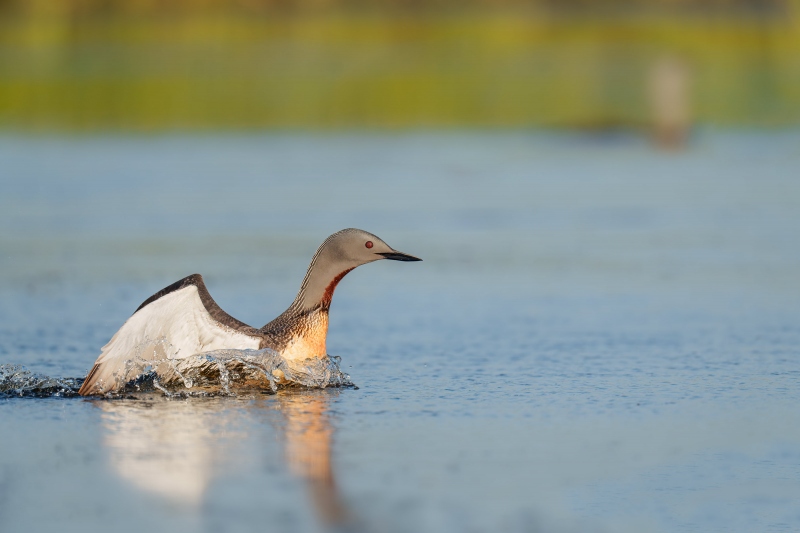
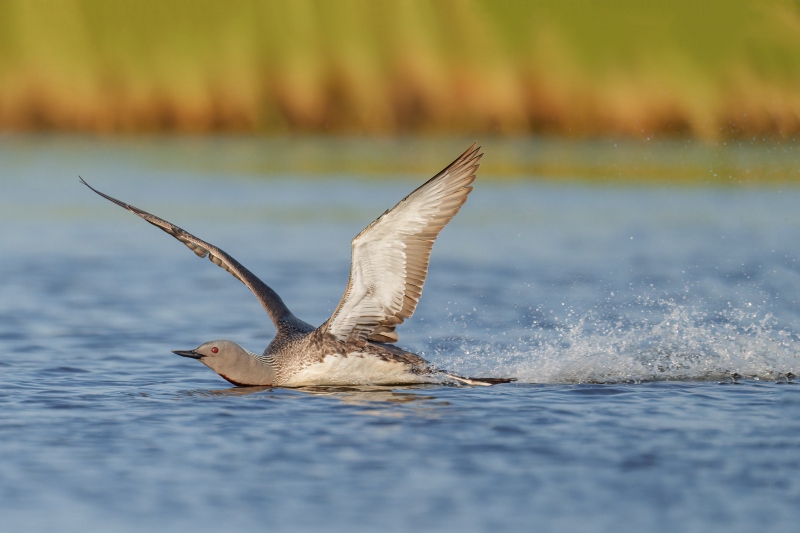
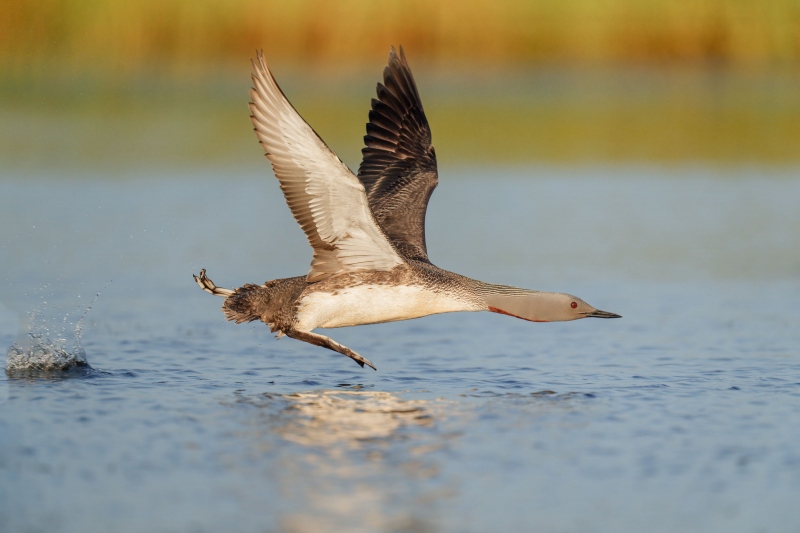
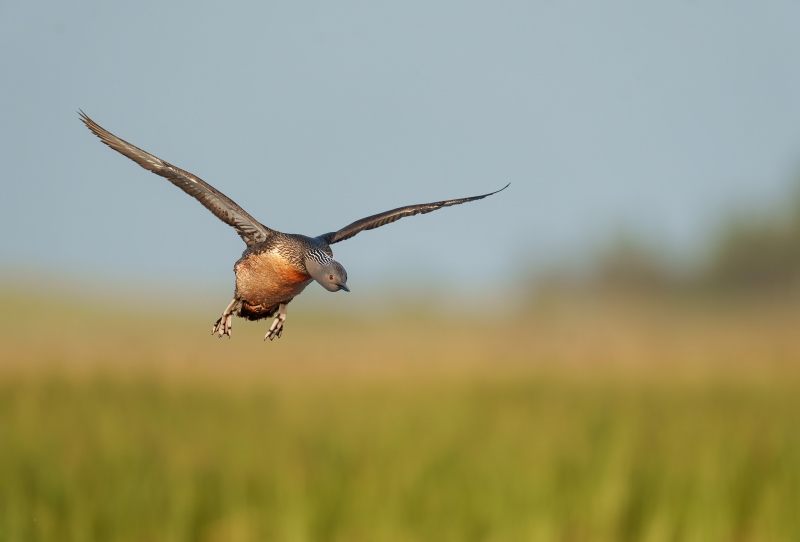
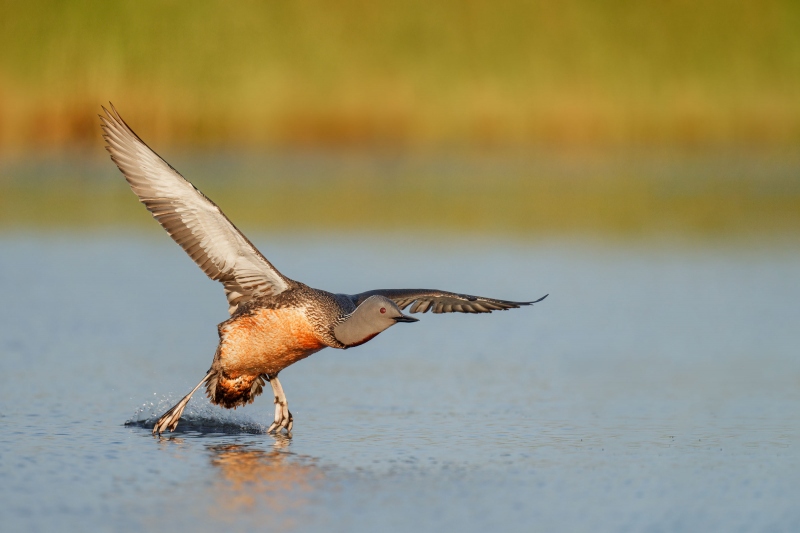
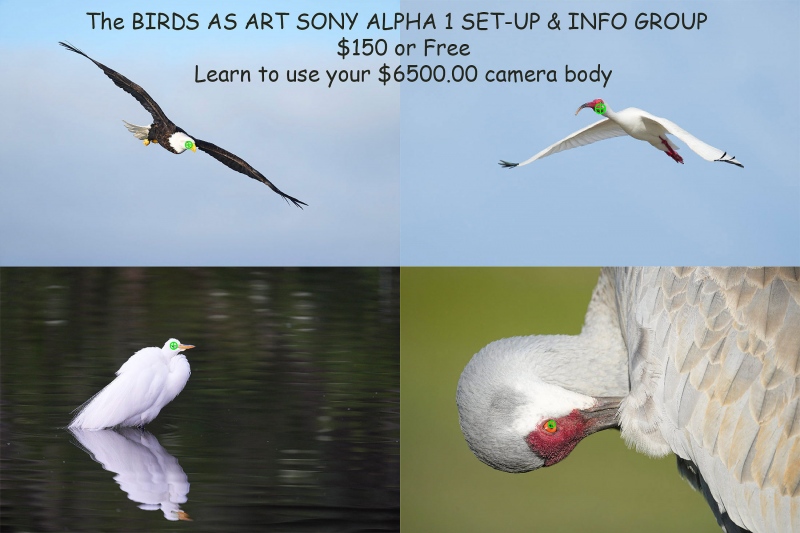













#3 for me. The disturbed water, indicating the takeoff point, completes it.
I like image # 5. It’s super dynamic. I also like #1 but would like it more if the loon were slightly more centered in the frame…
Hi Artie. Like David, I too agree with Chris on #3. I can feel the effort the loon is putting into getting airborne. Great image! Since you mentioned the lenses you brought, I hope you will share the best with the 12-24 f2.8 even if it wasn’t for birds.
Thanks, Warren. I did get two nice ones at 24mm but they have birds in them. I will share them at some point.
with love, a
For me it’s a toss up between 1 and 3. 1 because the RT making a wake, 3 for the full bird. #5 I don’t care for the wing/head overlap.
Thanks, Marr. The head overlapping the far wing slightly in #5 is a negative, but a small one for me as the bill is clear of the wing.
with love, artie
Hi, Artie. #3 for me for the reasons Chris Davidson gives. Wonderful images all.
All five Images of Red-throated Loon are interesting and well made! Image #1 and #2 Red-throated Loon are in the water and Image 3 and 5 Red-throated Loon is almost in the water.
I am always happy to get an email from Arthur Morris showing these great and cute things!
Image One for sure ..very unique photo a winner winner
Thanks. I like that one a lot also!
a
Wow! Wonderful set of RT Loon images, Art!
I love all of them, but #3 is a step or two above the others IMO.
The completely outstretched legs, splash of water and wing position all
seem to compliment the sleek body in the wonderful take off
capture. After that both #2 and #4 look to be close seconds, although #4
is so beautiful and I love the loons lowered head as it comes in for the landing.
Thanks, Chris. I agree. Was till you see Part II and III of this series — the image sets are even stronger!
with love, artie